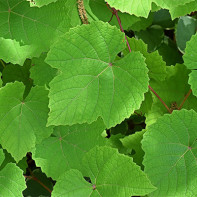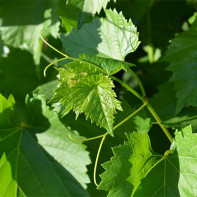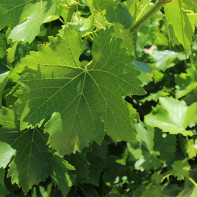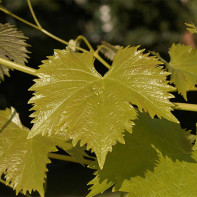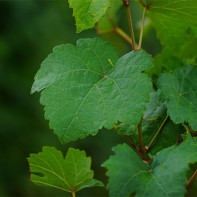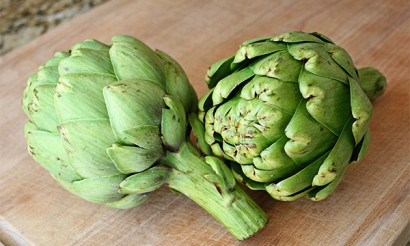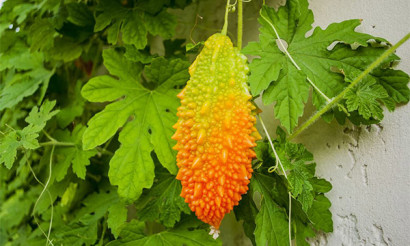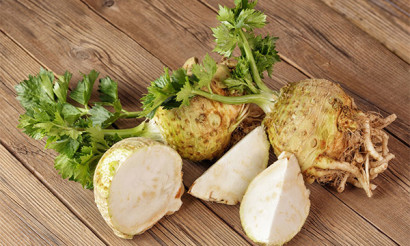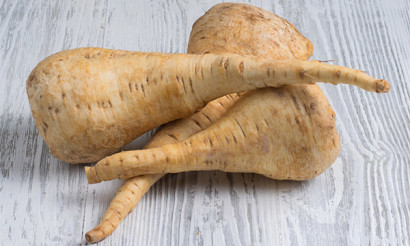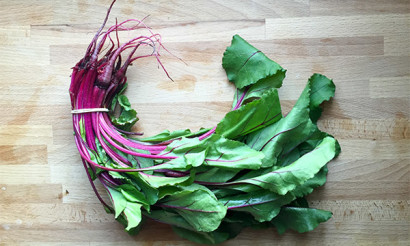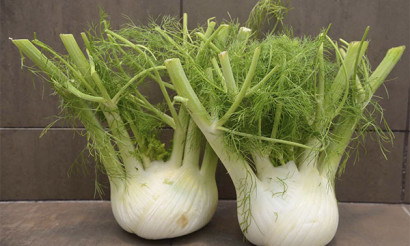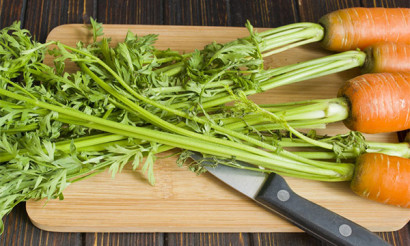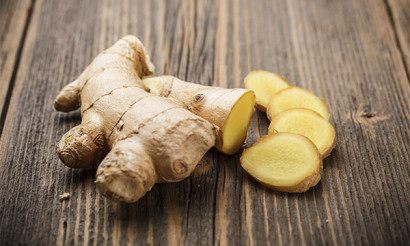Grape leaves: benefits and harms
The grape leaves not only have a pleasant taste, but also contain many useful components. This plant has been used by folk healers since ancient times. But they are not without their contraindications.
- Composition and calorie content
- What are the benefits of grape leaves
- For women
- For men
- During pregnancy
- When breastfeeding
- For children
- When losing weight
- Application in traditional medicine
- Firming tea
- Anti-inflammatory and diuretic infusion
- For the gastrointestinal tract and potency
- With gastritis and ulcer
- Infusion of herbal cough collection
- Diuretic and anti-inflammatory decoction
- Leaf Ointment
- Application in cosmetology
- Harm and contraindications
- Collection and storage methods
- Is it possible to freeze
- How to pickle grape leaves
- Recipe 1
- Recipe 2
- Recipe 3
- Recipes with grape leaves
- Dolma
- Chicken Casserole
- Lamb shoulder
- Cheese in grape leaves
- Can rabbits be given grape leaves
Composition and calorie content
Calorie content of the leaves is extremely low - 93 kcal per 100 g of product. Of this mass, water is 73 g, fats - 2 g, carbohydrates - 7 g, proteins - 7 g and dietary fiber - 11 g.
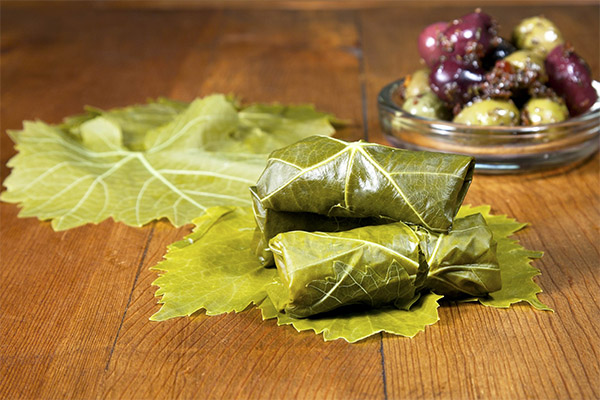
The chemical composition is diverse. It contains a large number of substances that play an important role in the formation and maintenance of a healthy body:
- Phosphorus. One of the most important minerals for the body. Used to keep bones strong and healthy. Phosphorus removes toxins from the body, and also accelerates the restoration of damaged tissues, takes part in the use and storage of energy.
- Calcium. Together with phosphorus, it takes part in keeping the bones strong and healthy. Together with magnesium improves the cardiovascular system. It blocks the absorption of saturated fats by the intestines, thereby preventing the development of cholesterol. Participates in the process of muscle contraction, therefore, with a lack of an element, cramps can occur.
- Potassium. It transmits nerve impulses and maintains a water-salt balance in the body. This is an important element that is responsible for the synthesis of proteins and converts glucose into cellular energy.
- Selenium. Makes the body more resistant to diseases and stresses, improving blood circulation and its antioxidant abilities. It is able to relieve inflammation and fight free radicals. It improves the work of the cardiovascular system and facilitates the condition of a person with many diseases.
- Magnesium. It takes part in most chemical reactions in the body and in the regulation of cell growth. It is an indispensable element for protein synthesis. Magnesium is also responsible for maintaining normal blood sugar and blood pressure within normal limits. Favorably affects the nervous system and relieves muscle tension. It is especially important for the cardiovascular system.
- Iron. Improves the processes of oxygen exchange in the body and promotes tissue respiration. Participates in the processes of metabolism and blood formation. It supports the normal functioning of the brain and thyroid gland, strengthens the immune system.
- Sodium. It normalizes water-salt metabolism in the body, improves the production of salivary and pancreatic enzymes. Regulates the acid-base balance in the body and has a vasodilating property.
- Manganese. Accelerates wound healing, helps reduce blood sugar. Strengthens bones and nourishes the body with antioxidants.
- Vitamins B1 – B9. They contribute to the transformation of fats and proteins into energy, strengthen the nervous system. They are able to improve the appearance and condition of the skin, nails and hair, are involved in the production of hemoglobin. Stimulate the work of the cardiovascular system and normalize blood pressure. Regulate blood sugar and take part in the metabolism of fats. Accelerate wound healing and contribute to the synthesis of antibodies.
- Vitamin C. It improves the functioning of the cardiovascular system, is very useful in stress due to the calming effect on the nervous system.It reduces blood pressure and increases the protective functions of the body. Due to the lack of this vitamin, the immune system weakens and makes a person vulnerable to viruses and bacteria. It also reduces the likelihood of developing cataracts by 20%.
- Vitamin A. Improves vision and increases the protective functions of the body. Lowers cholesterol and promotes collagen production, which increases skin elasticity. Strengthens the nervous system, improves sleep and metabolism.
- Vitamin E. It stimulates the immune system, participates in the processes of blood circulation and hormone production. Increases sugar levels and reduces body fatigue, is a prevention of Alzheimer's disease and diseases of the bladder.
- Vitamin K. Improves blood coagulation and is involved in protein synthesis. Responsible for the interaction of calcium with vitamin D and their absorption by the body. It has an analgesic effect and is the prevention of osteoporosis. Also neutralizes some poisons.
- Omega-3 fatty acids. The human body is practically not able to independently produce them, so it is very important that they come from outside. They remove cholesterol from the body, reduce appetite and dull the feeling of hunger. Omega-3s maintain normal blood pressure and improve blood composition. They also improve memory, restore skin elasticity and extend joint life.
What are the benefits of grape leaves
Grape leaves will be useful for almost everyone. They are distinguished by the ability to relieve inflammation, stop bleeding, and relieve indigestion. They have a positive effect on the nervous system and improve a person’s mood during depression.
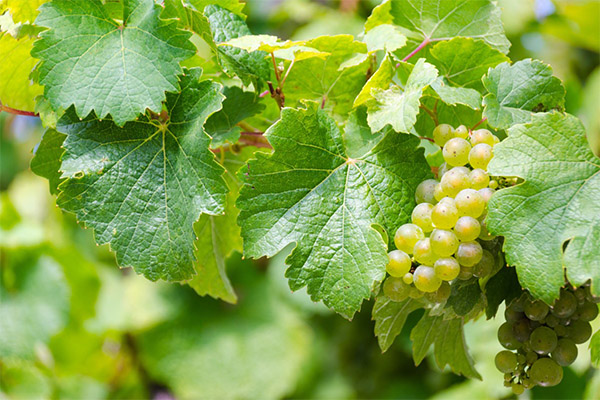
For women
Cases of using grape leaves in cosmetology are known. There are creams and face masks based on this raw material. Traditional medicine also uses leaves for this purpose. They are able to relieve inflammation on the skin, increase its elasticity and fight acne. In addition, thanks to vitamin A, leaves are a powerful antioxidant and slow down the aging process in the body.
They are also used to treat many female diseases, but before use, you should always consult a doctor. In some cases, they can be more harmful than good.
For men
Juice from grape leaves can enhance male strength. The leaves of the grapes have anti-inflammatory, antimicrobial and antibacterial properties, therefore, folk healers are advised to take them with prostatitis. But you need to do this only with the permission of the doctor.
During pregnancy
During pregnancy, grape leaves are not recommended, especially in the first and second trimester. Excessive use can cause uterine tone, which threatens to terminate the pregnancy. In small quantities, they may be useful, but doctors strongly recommend that you stop using them. Pregnant women have other, safer sources of nutrients.
When breastfeeding
Despite the large number of nutrients, grape leaves are not recommended for use during breastfeeding. This plant negatively affects lactation. Also, children may have problems with the intestines, in particular colic and bloating.
For children
Children who do not like to brush their teeth, and in every possible way avoid this, will like a way to combat tooth decay using grape leaves. To this end, traditional medicine has been using raw materials for a long time - you need to chew grape leaves. Interestingly, the effectiveness of this method is confirmed by many scientific studies. In the leaves of grapes there are organic acids, which are the prevention of gum disease, destroy unwanted microorganisms and whiten teeth. The effectiveness of the leaves is so great that one leaf per day is enough. Drink more and is not recommended because of the risk of damage to tooth enamel.
Also, grape leaves will be useful for children with a rich set of vitamins, which is important for strengthening immunity. Eating dishes from such greens can improve vision and relieve tension from the eyes.
When losing weight
Grape leaves are incredibly useful for weight loss. Firstly, they contain a low amount of calories, and secondly, they are rich in vitamins and minerals, and a decoction of this raw material has a diuretic effect, which helps to relieve swelling. A large number of plant fibers improves metabolism and digestion, and also gives a feeling of satiety for a long time. They can be eaten with dietary dishes, or in the form of medicinal compounds (infusions, decoctions, etc.).
Varicose veins and swelling are faithful companions of excess weight. Compresses from grape leaves will help get rid of this problem. They not only improve blood circulation and relieve swelling, but also relieve pain. There are even special tablets and ointments based on grape leaves.
Application in traditional medicine
Folk healers could not pass by such a useful plant, so they began to use it to treat many diseases. Decoctions, infusions, tinctures, teas and ointments are prepared from grape leaves.
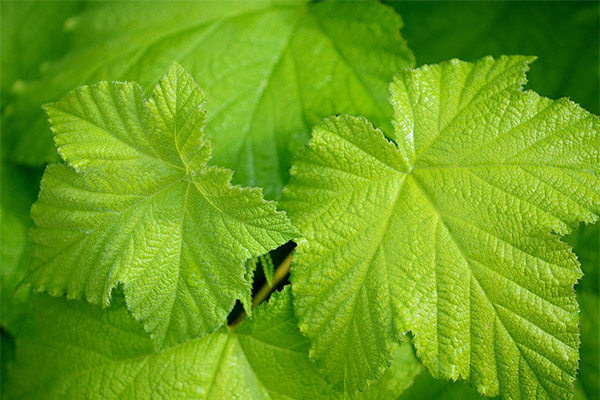
Firming tea
Tea is more useful to prepare from the dried leaves of the plant. In this form, the concentration of nutrients in them is much higher.
To make tea, you need to grind the leaves of grapes and pour boiling water, then leave to infuse for 15 minutes. Before use, dilute the tea leaves with boiling water in a ratio of 1: 1. The daily dose to strengthen the immune system is 200-250 ml. Such tea increases the protective functions of the body and saturates with useful substances.
Anti-inflammatory and diuretic infusion
For cooking, you need fresh grape leaves without twigs. They must be inspected for damaged areas and rinsed thoroughly. Then curl into lumps and fill the can with 0.5 L by 1/3. Next, pour boiling water over the leaves, cover, and put in a dark place for 20 days at room temperature. Shake the jar every two days.
Drink the medicine once a day, 10 drops diluted with 50 ml of boiled water, before eating. The maximum course of treatment is 14 days, after which you must take a mandatory break, lasting at least a week. You can apply the infusion externally. To do this, make lotions or lubricate problem areas of the skin with a cotton swab.
When stored in the refrigerator, the shelf life is 90 days, and at room temperature - two times longer.
For the gastrointestinal tract and potency
Tincture is made from young leaves of grapes. As an alcohol base, grape moonshine is ideal, but you can also use ordinary vodka. It will take a lot of leaves - one liter jar. They must be thoroughly washed, remove all branches and damaged areas, and then put in a jar, but do not tamper. Then pour 1 liter of vodka or moonshine. The jar is tightly corked with a lid, and then put in a dark place for 3-4 days. Then strain through several times folded cheesecloth and pour into another glass container.
Drink a few drops, diluted with water, 2-3 times a day before meals. Such a tincture improves the functioning of the gastrointestinal tract, treats some of its diseases (it is advisable to consult a doctor). It will also be useful for varicose veins for external use for compresses.
With gastritis and ulcer
In this case, you can use grape leaves only with the permission of the doctor and in the quantities prescribed by him. With these diseases, fresh leaf juice is used. First they need to be washed, then curled up in lumps and crushed in a deep bowl until gruel is formed. Then fold the cheesecloth several times, make it look like a bag, pour in the pulp and squeeze the juice. It is able to lower the acidity of the stomach (therefore, it can be used only for gastritis with high acidity, and not with lowered), relieves nausea and vomiting, and also softens the mucous membranes.Doses of treatment are selected individually for each person.
Infusion of herbal cough collection
Another option is tincture - based on herbal collection. It will take 1 tbsp. spoon of oak bark, 1 tbsp. spoon of raisins and grape leaves. Put whole leaves in a jar so that they occupy 1/2 liter jars, then add other components on top. Pour all 0.5 liters of vodka, tightly close the lid and put for 7-10 days in a cool dark place, shaking every two days. Strain and drink the finished medicine before meals, diluting a few drops in 1/2 cup of water. Tincture effectively fights cough, swelling and varicose veins, has a tonic effect.
Diuretic and anti-inflammatory decoction
The decoction is also used for compresses for varicose veins, rheumatism and inflammatory processes on the skin. It is able to improve the condition of the skin and hair.
Preparing a decoction of fresh grape leaves. The plant must be washed, remove the branches, and then squeeze the juice. Mix it with the pulp with water in a ratio of 1: 5, then put on low heat and cook for an hour, stirring constantly. Ready to put the broth to infuse at room temperature for 2-3 hours, then strain. Drink 1-2 tbsp. spoons before eating. The course of treatment should not exceed 3 weeks.
Leaf Ointment
First you need to get pure juice. You can do this if you crush the leaves to a state of gruel, and then squeeze them through cheesecloth. Strain the finished juice several times so that a clear liquid remains. After this, mix with honey to leave a thick consistency. Thanks to honey, grape leaf juice will be several times healthier. The ointment can be applied for wounds or inflammations on the skin. It helps with varicose veins and joint pain.
Application in cosmetology
Grape leaves positively affect the condition of the skin. They are able to nourish the skin, prevent peeling and relieve inflammation. Even traditional medicine uses them as a component for creams. But you can prepare the medicine at home.
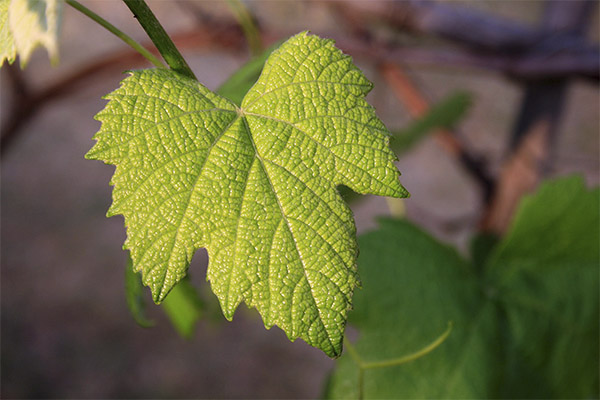
- It’s easy to make a simple mask for your skin. It is able to remove dead tissue and moisturize the skin. To make it, you need a few fresh grape leaves. They need to be thoroughly washed, dried and crushed in a blender to a pulp state. For the best effect, it is recommended to add 1-2 tablespoons of flower honey to the pulp and mix everything thoroughly. Apply the finished mask to the face, spreading with an even layer. After 25 minutes, rinse with cool water. Repeat the procedure several times a day.
- For oily skin, a different recipe is suitable. The leaves of the grapes must be carefully crushed in a bowl, after which add 10 teaspoons of grape juice and 5 tbsp. tablespoons of pure water (it is advisable to use spring water, in case of absence, you can replace with tea). If desired, add 10 teaspoons of sweet almond oil. Mix the resulting medicine thoroughly, and then transfer to an airtight container. You can use a glass jar. Apply the medicine to the skin twice a day - morning and evening, using a cotton swab. It not only tightens pores, but also cleanses them. After 5 minutes, rinse your face with water and apply face cream. You can store the medicine in the refrigerator.
- A decoction of grape leaves can improve hair condition. To prepare the medicine, you need to wash the leaves and remove all twigs and damaged parts. Then knead them to a pulp state and separate 100 g of the resulting mass, which pour 2.5 cups of boiled water. Place the container with leaves on a slow fire, cover and cook for one hour. During this time, the amount of fluid should decrease by a third. Infuse the broth until completely cooled, then strain through several times folded cheesecloth and pour into a glass container. Apply to rinse hair after shampoo. The broth gives them volume and shine, preventing hair loss, is able to relieve dandruff. You can also add it to shampoo.
Harm and contraindications
It is important to remember that only a healthy leaf of grapes can bring benefits to the body.You need to pay attention to everything - the shape of the sheet, its color, structure, as well as the petiole opening. For example, if the leaf bends at the edges or begins to dry out, then it should not be eaten. The leaves should be light, usually darkening is typical for autumn, and if this occurs during the collection period, it is better to refrain from harvesting such a leaf.
A particularly dangerous warning is a white coating on the surface. This indicates damage by microorganisms, which can only be seen with a microscope. Once in the body, they can cause many problems. You need to ignore the leaves, which become stained.
Therefore, in order not to be left without medicinal raw materials, it is necessary to timely process it from pests. This is usually done when a fifth leaf grows on a shrub. If it was not possible to avoid the appearance of diseases, it is necessary to correctly identify the disease and get rid of it.
Grape leaves are a valuable product for the body, but it should be consumed in moderation. Exceeding the allowable dosage can cause the development of diseases of the gastrointestinal tract. It is forbidden to take grape leaves during pregnancy, breastfeeding, gastritis with low acidity. They are also not recommended for asthma, kidney failure, diabetes mellitus, heart failure, and cancer. In the presence of such pathologies, leaves can be taken only after the permission of the doctor.
Healthy people should also consult a doctor - in some cases, individual intolerance to the plant may occur, which leads to serious health problems.
Collection and storage methods
In order for the plant to maintain its positive properties for as long as possible, you need to adhere to some rules and features of the collection.
Special attention should be paid to collection time. It is recommended to do this during May-June. For medicinal purposes, it is better to use only young leaves. Their surface should be soft and smooth, and the veins should be thin. It is advisable to collect leaves for medicinal purposes in sunny weather in the morning, when the dew has not yet had time to completely descend. Tear off the leaves along with twigs, but they must be removed before use.
You can store them in different ways, but it is more convenient to do this in a dried form. To dry the leaves, you must first rinse them thoroughly, then remove all twigs and damaged parts. Then twist the leaves with envelopes and put one on a baking sheet. Dry at a temperature of 60–65 degrees for at least 6 hours with the door open. Then leave them to cool and pour into a fabric bag. Store leaves at room temperature, airing them from time to time. The shelf life of such raw materials is one year.
To preserve green leaves, they can be salted. To do this, they need to be washed, put in any sealed container, which must first be thoroughly washed and dried. Next, prepare a saline solution. To store leaves, a concentration of salt in water of 10% is sufficient, which means you need to mix it with water in a proportion of 1:10, for example, 30 g of salt with 300 ml of water. Pour the leaves of grapes to the top, then close the lid and put in a cool place.
Another way to preserve greens is to preserve it. The washed leaves need to be twisted with tubes, and then placed in boiling water for 3 seconds, and then immediately in cold water. Then transfer them to glass jars and pour brine, which is prepared in the calculation of 40-45 g of salt per 1 liter of water. Banks put in a dark place for 2-3 days, then add 1 teaspoon of vinegar and preserve. Store in the pantry or in the cellar.
Is it possible to freeze
Freezing is another way to store grape leaves for a long time. First you need to prepare the raw materials - thoroughly wash and remove all branches. Then put the leaves one on one, in stacks of up to 12 pieces, roll them up with tubes. It is previously recommended that they be dried in the oven so that they are not very brittle. Then, turning into rolls, pack them in tight bags (cling film and pouches crumble heavily) and, releasing all the air from there, place them in the freezer.Since the leaves of the grapes are quite brittle, it is advisable to place the rolls in a solid container - this may be a regular plastic container for food. Each roll is also recommended to sign. On the leaflet you need to indicate the date of collection of the leaves, and the date when they were placed in the freezer. The shelf life of grape leaves is up to 8 months. After that, they lose their taste, beneficial properties and become dry.
Defrosting occurs in several stages. First, the convolutions need to be moved from the freezer to the refrigerator. When the ice melts, withstand at room temperature. You can also rinse the bundles after the refrigerator with boiling water, and wait until all the moisture is absorbed. The leaves of the grapes are not subject to re-freezing, so you need to defrost not all at once, but as necessary.
How to pickle grape leaves
There are a large number of recipes for pickling grape leaves for the winter, but among them there are 3 main ones that are most popular.
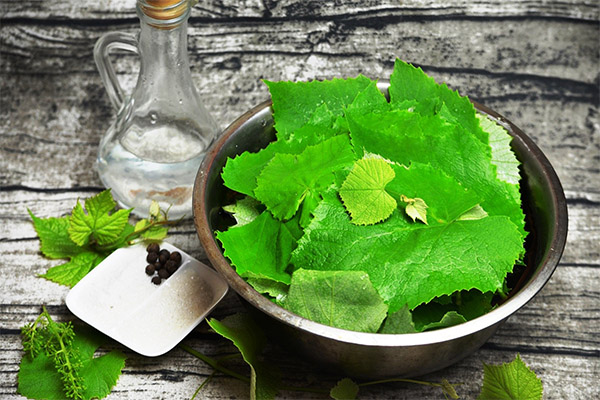
Recipe 1
The Armenian dish of dolma is stuffed cabbage from grape leaves. Very often pickled leaves are used, which are prepared very simply. This will require:
- 100 leaves of grapes;
- 3 l of water;
- 3 tbsp. tablespoons of salt.
The leaves should be thoroughly washed, trimmed with ponytails, and then dried with a thin layer on a towel. While they are drying, you can start cooking the marinade - pour water into the pan, add salt, and bring to a full boil. Fold the dried leaves in small stacks of 10-15 pieces, then roll them up and put them tightly in a jar vertically. Pour the boiling brine into cans, and then roll them with metal lids, although you can simply close them with plastic ones. You need to store pickled leaves in a cool place, you can even in the refrigerator.
Recipe 2
Another method of pickling involves the use of lemon. Such leaves not only acquire a refined taste, but become several times more useful and can be effectively used for acute respiratory viral infections and diseases of the gastrointestinal tract. Marinated with lemon leaves have anti-inflammatory and antibacterial properties. To prepare you will need:
- 1 lemon
- 40 g of sugar;
- 20 g of salt;
- 500 ml of water;
- 25 g of citric acid;
- grape leaves.
Wash the leaves, leave to dry, rinse the lemon and rub the zest with a special grater, then cut into small slices. Put 5-6 grape leaves and roll them into rolls, then place them in jars, shifting each leaf tube with a slice of lemon. Put water on the stove, add salt, acid, sugar, and then bring to a boil. Pour the liquid into the jars and seal them tightly, then put upside down in a warm place for a day.
Recipe 3
Another interesting recipe is pickled grape leaves with mustard. This option is great for people who do not like to use vinegar. With this recipe, you can keep the leaves fresh, with a natural taste. For this, the following ingredients are needed:
- 1 teaspoon mustard powder;
- grape leaves;
- 1 teaspoon of salt;
- 0.25 teaspoons black pepper powder.
Rinse the leaves thoroughly, and then lower them in boiling water for a few seconds. Then roll them in tubes of 10 pieces and transfer to a jar. Add salt, mustard powder and pepper to each jar, then pour boiling water over it. Roll up containers, turn them over and put them in a warm place until they cool completely, then transfer them to a permanent storage location for preservation.
Recipes with grape leaves
Due to its pleasant taste, grape leaves are used for cooking different dishes.
Dolma
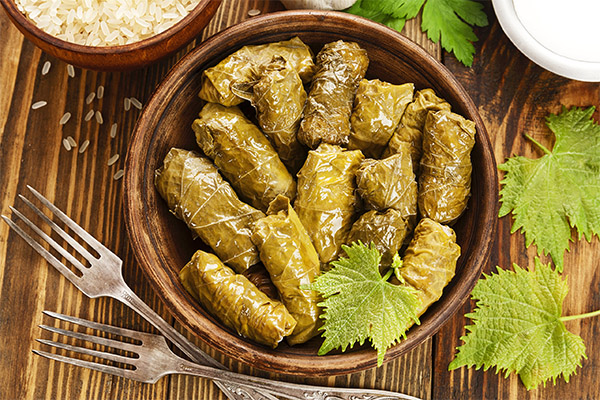
These are oriental cabbage rolls where grape leaves are used instead of cabbage leaf. In Armenia, dolma is always prepared for the holidays.The main secret of preparing a dish is to use only young and fresh leaves, otherwise the taste will be completely different. For cooking you will need:
- 1 kg of beef tenderloin;
- 500 g of vine leaves;
- 2-3 large bulbs;
- 2 sweet peppers;
- 100 g tomato;
- 100 g of rice;
- cilantro to taste;
- 2 tbsp. tablespoons of dried basil;
- 150 g butter;
- salt / spices to taste.
First you need to prepare all the vegetables and meat. Pour boiling water over the leaves of the grapes and leave them for 5-10 minutes. Peel the tomato. To make it easier to do this, pour them over with boiling water. Peel and cut each onion into 4 parts. Pepper, remove white films from meat.
Next, you need to pass the beef with butter, herbs and vegetables through a meat grinder, then add salt, spices and mix everything thoroughly. Then add raw rice and mix again. Leave the veins down on the table, carefully to prevent damage, remove the hard tails. In the center of each leaf, put a small portion of meat, not more than a walnut, and wrap, but not too tight, otherwise boiled rice may break them.
Lay the leaves with minced meat in rows on the bottom of the pan, cover with water and press down on a plate so that the rice cooks evenly. Bring to a boil, then turn on a slow fire and cook for another 40 minutes. Serve on plates with sauce.
Chicken Casserole
This is a delicious dish that can be prepared for every day and on the festive table. Grape leaves give the dish a special taste and piquancy. To prepare you will need:
- 200 g of cheese;
- 12-15 grape leaves;
- 6 tbsp. tablespoons of wheat flour;
- 3 eggs;
- 2 tbsp. tablespoons of vegetable oil;
- 200 g of cottage cheese;
- 500 g of chicken;
- 1 zucchini;
- 1 teaspoon of baking powder;
- herbs / salt / spices to taste.
First you need to grate the zucchini and 100 g of cheese on a coarse grater, then finely chop the herbs and add to the ingredients, then mix thoroughly and add the flour. Add cottage cheese, baking powder and vegetable oil to the eggs. Add salt, mix and add to the cheese with zucchini, mix again.
Lay the baking dish with grape leaves. Skip the chicken fillet with onions through a meat grinder, add the egg, spices, and roll into balls.
Squash the dough on the leaves, add the balls on top and bake for 40 minutes at a temperature of 200 degrees. At the end, sprinkle the casserole with the remaining 100 g of cheese, grated on a fine grater.
Lamb shoulder
This dish can truly surprise guests. It is unlikely that any of them heard about such an interesting delicacy. To prepare a dish, you will need:
- 1 kg of mutton scapula or 1 leg;
- 2 kg of salt;
- 3 eggs;
- 7-10 grape leaves;
- 1 teaspoon thyme;
- a couple of sprigs of mint;
- 1 tbsp. a spoon of dry adjika;
- 1-2 branches of barberry;
- 10 small potatoes;
- 10 cloves of garlic;
- greens to taste.
Rinse the lamb thoroughly and dry with a towel, then grate with dry adjika. Rinse and dry the greens, put the leaves of grapes on a sheet of parchment, put meat on top of them, and on top the rest of the herbs and spices.
In a deep bowl, mix the salt with the eggs. It’s better to do it with your hands. Put the mixture of salt and eggs on top of the meat with herbs and form a crust. Parchment with meat on a baking sheet and put in a preheated oven to 150 degrees. Bake the dish for 90 minutes.
Peel, wash, squeeze the garlic on top and mix thoroughly. Other spices can be added if desired. Potatoes can be baked in parallel with meat. When ready, decorate with greens.
Remove the salt carapace from the meat (sometimes you have to do it with a hammer), shift the lamb to the dish. Serve with potatoes and other vegetables.
Cheese in grape leaves
This is a very simple, but at the same time tasty and healthy snack. You can take it with you on a picnic or on the road. This incredible treat is not only tasty, but also healthy.To prepare a snack, you will need:
- 250 g of your favorite cheese;
- 12 grape leaves;
- 20 ml of red semi-dry wine;
- 1.5 liters of water.
First you need to rinse the leaves, then transfer them to the pan, pour boiling water, cover and let it brew for 2 minutes. Cut the cheese into small pieces, each of them wrapped in a leaf of grapes. Then put everything in a pan, pour wine and squeeze something heavy. In a day, the dish will be ready.
Can rabbits be given grape leaves
Giving rabbits grape leaves is not only possible, but also necessary. They contain vitamin A, which improves the functioning of the stomach and nervous system in rabbits. It also helps improve reproductive function. Vitamins B and C are also very important for their body - they strengthen immunity and normalize digestion. If these vitamins will regularly enter the body of rabbits, then their coat will be soft and shiny.
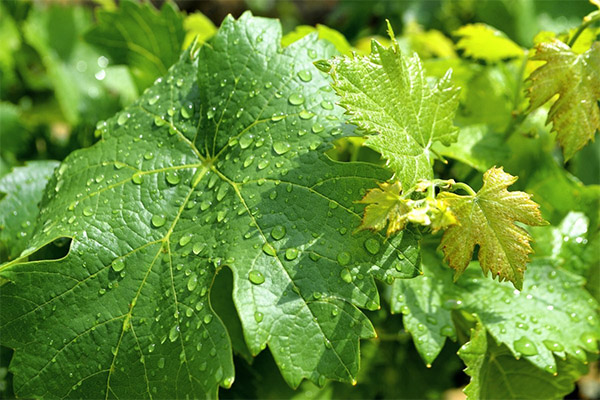
Eating a few leaves a day, rabbits will receive a daily intake of trace elements. Magnesium, which is abundant in leaves, is especially important for the normal growth and development of the rabbit's body. In addition to the main diet, it is recommended to give leaves to lactating rabbits.
But you do not need to get too carried away with grape leaves. Firstly, the diet of rabbits must be varied, and secondly, the leaves contain glucose, which in large quantities can cause obesity, digestive problems and cause dysbiosis. Previously, the leaves need to be dried - in this form, they are digested better in animals. If the grapes have been treated with chemicals, the leaves must first be washed.
Veterinarians advise giving rabbits 1-2 leaves per sample, and then observing their condition. Sometimes unusual food can cause problems in the gastrointestinal tract. If this happened, then give the treat further is not worth it.
It is also worth remembering that only homemade grapes can be given to rabbits. The leaves and fruits of the wild are not suitable for food, although they often grow in areas like an ornamental plant.
Grape leaves are a valuable and affordable source of nutrients for the body. It is difficult to find a summer cottage without this plant. But, as they say, everything is good in moderation. If you do not exceed the recommended dosage of leaf consumption, then you can extract the maximum benefit from the plant.
«Important: all information on the site is provided exclusively in fact-finding purposes. Before applying any recommendations, consult with a profile specialist. Neither the editors nor the authors are liable for any possible harm caused materials. "

